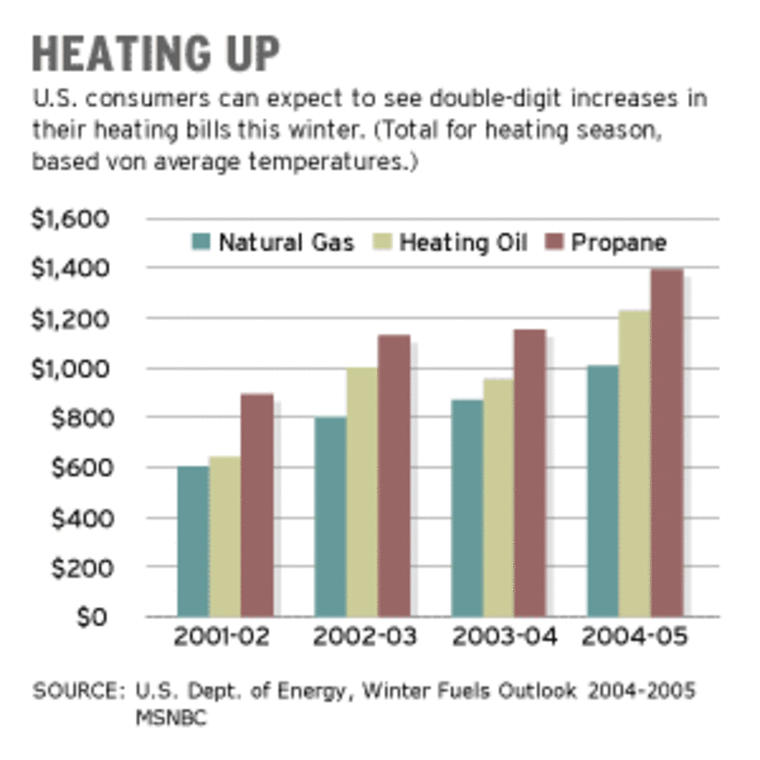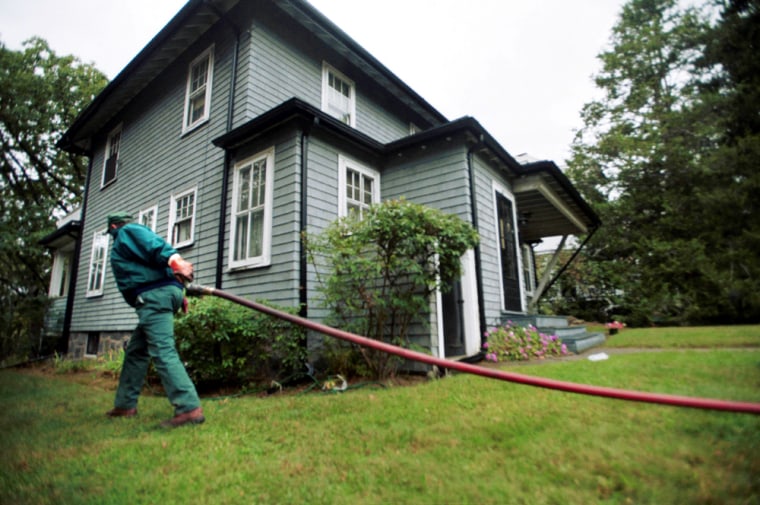With oil and natural gas prices continuing to climb, consumers can expect to see a big jump in this winter’s heating bills. Those bills will fall hardest on the people least able to pay them -- particularly elderly households with low or fixed incomes.
Part of the problem is that federal funding for local fuel assistance programs isn't keeping pace with the surge in energy prices. The result is a “prescription for disaster,” according to a spokesman for the Boston-based agency that manages the fuel assistance program there.
"This year, with the reduced amount of resources from the federal government, and no state money, this huge increase (in energy costs) that is staring us in the face like a tidal wave is going to hit for sure,” said John Drew, executive vice president of Action for Boston Community Development, the independent non-profit agency that administers the federal fuel assistance program in the Boston area. “People are sitting there with no income to speak of to pay for it. It’s a prescription for disaster.”
In fact, federal funding of the remains at about the same level as it stood when the program was started in 1981 -- even though heating oil prices have risen 67 percent during that period.
This year, some $1.2 billion has been sent to states to help keep low-income households warm -– down from $1.7 billion allocated at the start of last year’s heating season. (About $300 million in additional funding was freed up last year after a January cold snap.) Now, with winter about to set in, some households are still trying to pay off heating bills from last year, said Drew.
Faced with the funding shortfall, dozens of senators and governors have asked Congress for more money to offset the jump in home heating costs. But with the presidential campaign drawing focus from the issue, increased funding is not expected until after the election.
So, on top of a shortage of flu vaccines, many elderly households on low or fixed incomes who depend on fuel assistance may have trouble staying warm this winter, Drew said.
"Families are making these horrible choices between heating or eating or paying the rent," he said. "In some cases, some people get space heaters, which are extraordinarily dangerous, and they start fires."
Colder than normal?
A lot depends, of course, on just how low temperatures fall this winter. Some long-range forecasters are predicting colder-than-normal weather this year. And though many people in the Northeast remember last winter’s frosty January as one of the worst on record, the winter overall was not that severe, according to meteorologist Tom Paylor at Weather Predict, which advises businesses on long-range forecasting.
“If you compare what happened last winter with some of the colder winters we’ve seen over the past 30 years or so –- particularly the winters of the late 1970s -- this past winter really was nothing at all,” he said.
Meanwhile, all homeowners face double-digit increases in their heating bills this winter, no matter how they heat their homes, according to the Energy Department’s . The average heating oil bill for the season, for example, is expected to rise to $1,223, up 29 percent from a year ago. A severely cold winter, the report says, could push that bill to $1,412.

The run-up in the price of crude oil gets only part of the blame for the surge in home heating costs for the coming winter. Heating oil inventories, for example, are tight and getting tighter. At a time when refiners are typically stockpiling heating oil for the winter, hurricane-related supply cutoffs have left some refiners scrambling to find crude. As a result, heating oil inventories have been falling when they should be rising. That’s a big reason that prices hit nearly $2 a gallon last week, up 60 cents from this time last year.
(By contrast, gasoline prices have held relatively flat since the big run-up this spring. That’s due largely to a seasonal drop in demand that typically follows the end of the summer driving season. And there’s plenty of gasoline sloshing around in the system after refiners produced at maximum capacity this summer to take advantage of high prices. By the end of the summer, gasoline inventories had surged above their five-year seasonal average, though supplies have since fallen to more normal levels.)
Supplies of natural gas, the most widely used home heating fuel, are about average for this time of year. But prices have still surged in the past few months. Part of the reason is that high crude oil prices are expected to prompt some industrials users to switch to natural gas. That increased demand -– especially if the winter proves colder than normal -– has some energy traders worried that natural gas producers may not be able to keep up, according to energy trader Phil Flynn at Alaron Trading in Chicago.
“We’re drilling more (natural gas) and producing less,” he said. “Our rig counts are up but our supplies are declining. We have a major issue -- both here and in Canada -- where we thought that rigs that were dug years ago would last for years. And we’re finding the rates of decline to be a lot faster than anyone had anticipated.”
A relatively cool summer helped conserve supplies of natural gas, which is widely used to generate the power need to run the nation's air conditioners. Though natural gas supplies are considered adequate for a normal winter, a prolonged cold snap could send prices spiking even higher.
“This is a crisis that has been kind of swept under the rug because Mother Nature has bailed out the market on more than one occasion,” said Flynn.
Propane prices are also higher than last year, and supplies could be tighter than usual. In its latest weekly energy update, the Energy Department notes that this year’s bumper corn crop in the Midwest, up 15 percent from last year, could strain propane supplies -- since it is the primary fuel used by farmers to dry their crops.
